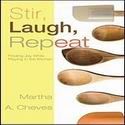I found this informative and decided to share.
You probably already know the top cancer cause — smoking. But you may not be as familiar with all of the other six.
Because of medical advances and new treatment options, many forms of cancer have become manageable chronic illnesses, like diabetes.
And other discoveries have shown that it's possible to cut your cancer risk. From diet and lifestyle changes to avoiding toxic chemicals and too much sun exposure, simple changes can make a big difference.
Cancer Risk No. 1: Tobacco
Tobacco kills. Smoking can damage almost every organ in your body and is a known cause of at least 15 different types of cancer.
The risks for cancer aren't limited to cigarettes. Cigars, pipes, chewing tobacco, and the smokelesss tobacco called snuff are all linked to cancer.
Want another reason to quit? Secondhand smoke is a cancer cause, too. Tens of thousands of people — including children — have diseases ranging from asthma and pneumonia to sudden infant death syndrome and even ear infections as a result of secondhand smoke.
Cancer Risk No. 2: Obesity
Being overweight or obese is a known cancer cause. In fact, excess weight is linked to an increased risk for developing more than a dozen types of cancer, including breast and pancreatic cancers. The American Cancer Society stresses the need to keep your weight in check by, first, eating right:
- Eat a diet limited in processed and red meats and including five or more servings of fruits and vegetables every day. Eat whole grains instead of processed grains.
- Limit your alcohol intake to one drink per day for women or two for men.
Cancer Risk No. 3: No Exercise
Diet alone usually isn't enough to maintain a healthy body and cut your cancer risk. So, pick an activity that suits your level of fitness and get moving.
- Adults should be physically active for at least 30 minutes on five or more days a week.
- Children should engage in physical play for at least 60 minutes five days per week.
Cancer Risk No. 4: Sun Exposure
About one million cases of skin cancer are diagnosed each year in the United States and most are sun related. Melanoma, the most serious skin cancer, can be fatal. You can lower your risk for skin cancer by limiting the time that you spend in the sun, especially between 10 a.m. and 4 p.m. Take these additional steps:
- Seek out shade, especially during the middle of the day.
- Use sunscreen and wear protective clothing, specifically the kind you can't see through when held up to a light.
- Wear a hat and protect your eyes with sunglasses that have 99 percent UV absorption.
- Follow these rules even on cloudy days.
- Avoid sun lamps and tanning beds because they can cause the same type of skin damage as the sun.
Cancer Risk No. 5: Infection
Infections from viruses, bacteria, and parasites are a known cancer risk in up to 20 percent of all cancers. Several of those viruses are sexually transmitted, such as human papillomavirus (HPV) and human immunodeficiency virus (HIV).
You can reduce your risk for getting these types of viruses by using condoms during sex. Women can reduce their risk of cancer from HPV by getting a vaccine. In fact, the American Cancer Society now recommends the HPV vaccine for girls who are nine and older.
Cancer Risk No. 6: Chemical Exposure
A variety of substances found in common products are known to be a cancer cause. Two of particular interest:
- Asbestos, a fibrous substance, is found in many older buildings where it was used as insulation and as a fire-retardant; inhaling it can cause cancer. So be sure to have your home checked for asbestos before beginning any sort of renovation. Carpenters and other skilled workers who deal with remodeling older homes should investigate proper safety precautions before working in buildings that contain asbestos.
- Tetrachloroethylene is a solvent used in dry cleaning. While wearing dry-cleaned clothes isn't considered dangerous, those who work in a dry cleaning business should change clothes after work, wash work clothes regularly, and keep their food out of the work area.
Cancer Risk No. 7: Consumer Products
Antiperspirants, talcum powder, hair dye, aspartame, and some cosmetics have all been reported as possible cancer causes, often incorrectly. The truth is that there is no conclusive evidence that any of these products cause cancer. But the U.S. Food and Drug Administration continues to monitor various studies and issues periodic updates.














No comments:
Post a Comment